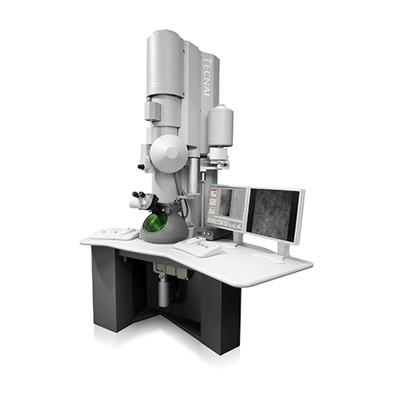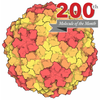+ Open data
Open data
- Basic information
Basic information
| Entry | Database: PDB / ID: 9qvh | ||||||||||||||||||||||||||||||
|---|---|---|---|---|---|---|---|---|---|---|---|---|---|---|---|---|---|---|---|---|---|---|---|---|---|---|---|---|---|---|---|
| Title | Turnip Crinkle Virus: virus-like particles (TCV-P38) | ||||||||||||||||||||||||||||||
 Components Components | Capsid protein | ||||||||||||||||||||||||||||||
 Keywords Keywords | VIRUS LIKE PARTICLE / ssRNA plant virus / icosahedral / RNA packaging | ||||||||||||||||||||||||||||||
| Function / homology | Plant viruses icosahedral capsid proteins 'S' region signature. / Icosahedral viral capsid protein, S domain / Viral coat protein (S domain) / T=3 icosahedral viral capsid / Viral coat protein subunit / symbiont-mediated suppression of host innate immune response / structural molecule activity / RNA binding / Capsid protein Function and homology information Function and homology information | ||||||||||||||||||||||||||||||
| Biological species |  Turnip crinkle virus Turnip crinkle virus | ||||||||||||||||||||||||||||||
| Method | ELECTRON MICROSCOPY / single particle reconstruction / cryo EM / Resolution: 3.47 Å | ||||||||||||||||||||||||||||||
 Authors Authors | Saunders, K. / Shah, S. / Peyret, H. / Meshcheriakova, Y. / Richardson, J. / Eltschkner, S. / Lawson, D.M. / Lomonossoff, G. | ||||||||||||||||||||||||||||||
| Funding support |  United Kingdom, 2items United Kingdom, 2items
| ||||||||||||||||||||||||||||||
 Citation Citation |  Journal: J Mol Biol / Year: 2025 Journal: J Mol Biol / Year: 2025Title: The Specificity of RNA Packaging in Isometric RNA Plant Viruses is Principally Determined by Replication. Authors: Keith Saunders / Sachin N Shah / Hadrien Peyret / Yulia Meshcheriakova / Jake Richardson / Sandra Eltschkner / David M Lawson / George P Lomonossoff /  Abstract: A potato virus X (PVX)-based transient expression system (pEff) that produces replicating RNA has been used to examine the specificity of RNA packaging in the isometric viruses, turnip crinkle virus ...A potato virus X (PVX)-based transient expression system (pEff) that produces replicating RNA has been used to examine the specificity of RNA packaging in the isometric viruses, turnip crinkle virus (TCV) and satellite tobacco necrosis virus-1 (STNV-1). Expression of the coat proteins from the subgenomic RNA derived from the replicating PVX genome results in the efficient production of virus-like particles (VLPs), indistinguishable in structure from native virus particles, and encapsidation of both the subgenomic RNA and truncated versions of the replicating genomic RNA. Non-specific encapsidation of host RNA (which is not replicating) could not be detected in this system, implying that replication is the major determinant of packaging in isometric as well as filamentous positive-strand RNA plant viruses. We further utilised the system to investigate the role of putative packaging signals previously identified within the coat protein open reading frames of both TCV and STNV-1. The results show that eliminating the hairpin structures previously identified as packaging signals has no detectable effect on the specificity of RNA packaging. Replacement of the 213 nucleotide sequence within the TCV coat protein coding region, believed to be important for genomic packaging, with an equivalent sequence codon-optimised for Plasmodium falciparum resulted in less efficient capsid formation and RNA packaging, but did not alter packaging specificity; addition of copies of the wild-type sequence did not complement the defects. We propose that replication is the major determinant of genome packaging specificity in plant RNA viruses, while packaging signals may play a role in packaging efficiency. | ||||||||||||||||||||||||||||||
| History |
|
- Structure visualization
Structure visualization
| Structure viewer | Molecule:  Molmil Molmil Jmol/JSmol Jmol/JSmol |
|---|
- Downloads & links
Downloads & links
- Download
Download
| PDBx/mmCIF format |  9qvh.cif.gz 9qvh.cif.gz | 306.8 KB | Display |  PDBx/mmCIF format PDBx/mmCIF format |
|---|---|---|---|---|
| PDB format |  pdb9qvh.ent.gz pdb9qvh.ent.gz | 253.6 KB | Display |  PDB format PDB format |
| PDBx/mmJSON format |  9qvh.json.gz 9qvh.json.gz | Tree view |  PDBx/mmJSON format PDBx/mmJSON format | |
| Others |  Other downloads Other downloads |
-Validation report
| Summary document |  9qvh_validation.pdf.gz 9qvh_validation.pdf.gz | 1.6 MB | Display |  wwPDB validaton report wwPDB validaton report |
|---|---|---|---|---|
| Full document |  9qvh_full_validation.pdf.gz 9qvh_full_validation.pdf.gz | 1.6 MB | Display | |
| Data in XML |  9qvh_validation.xml.gz 9qvh_validation.xml.gz | 49 KB | Display | |
| Data in CIF |  9qvh_validation.cif.gz 9qvh_validation.cif.gz | 70.3 KB | Display | |
| Arichive directory |  https://data.pdbj.org/pub/pdb/validation_reports/qv/9qvh https://data.pdbj.org/pub/pdb/validation_reports/qv/9qvh ftp://data.pdbj.org/pub/pdb/validation_reports/qv/9qvh ftp://data.pdbj.org/pub/pdb/validation_reports/qv/9qvh | HTTPS FTP |
-Related structure data
| Related structure data |  53398MC  9qveC  9qvfC  9qvgC C: citing same article ( M: map data used to model this data |
|---|---|
| Similar structure data | Similarity search - Function & homology  F&H Search F&H Search |
- Links
Links
- Assembly
Assembly
| Deposited unit | 
|
|---|---|
| 1 | x 60
|
- Components
Components
| #1: Protein | Mass: 38170.941 Da / Num. of mol.: 3 Source method: isolated from a genetically manipulated source Source: (gene. exp.)  Turnip crinkle virus / Strain: M / Gene: ORF4 / Production host: Turnip crinkle virus / Strain: M / Gene: ORF4 / Production host:  Has protein modification | N | |
|---|
-Experimental details
-Experiment
| Experiment | Method: ELECTRON MICROSCOPY |
|---|---|
| EM experiment | Aggregation state: PARTICLE / 3D reconstruction method: single particle reconstruction |
- Sample preparation
Sample preparation
| Component | Name: Turnip crinkle virus / Type: VIRUS Details: In the manuscript, this sample is designated TCV-P38. The complete P38 coat protein gene was inserted into the pEff vector. Expression was initiated by infiltrating leaves of Nicotiana ...Details: In the manuscript, this sample is designated TCV-P38. The complete P38 coat protein gene was inserted into the pEff vector. Expression was initiated by infiltrating leaves of Nicotiana benthamiana with suspensions of Agrobacterium tumefaciens strain LBA4404 harbouring this vector. Entity ID: all / Source: RECOMBINANT |
|---|---|
| Molecular weight | Value: 6.86 MDa / Experimental value: NO |
| Source (natural) | Organism:  Turnip crinkle virus / Strain: M Turnip crinkle virus / Strain: M |
| Source (recombinant) | Organism:  |
| Details of virus | Empty: NO / Enveloped: NO / Isolate: STRAIN / Type: VIRUS-LIKE PARTICLE |
| Natural host | Organism: Brassica rapa subsp. rapa |
| Virus shell | Name: capsid / Diameter: 340 nm / Triangulation number (T number): 3 |
| Buffer solution | pH: 7.4 / Details: 1 mM MgSO4 1mM NaPO4 and pH7.4 |
| Specimen | Conc.: 4 mg/ml / Embedding applied: NO / Shadowing applied: NO / Staining applied: NO / Vitrification applied: YES |
| Specimen support | Details: glow discharged for 60 seconds at 8 mA using an ACE 200 (Leica Microsystems) Grid material: COPPER / Grid mesh size: 300 divisions/in. / Grid type: Quantifoil R2/1 |
| Vitrification | Instrument: FEI VITROBOT MARK IV / Cryogen name: ETHANE / Humidity: 100 % / Chamber temperature: 277 K |
- Electron microscopy imaging
Electron microscopy imaging
| Experimental equipment |  Model: Tecnai F20 / Image courtesy: FEI Company |
|---|---|
| Microscopy | Model: TFS TALOS F200C |
| Electron gun | Electron source:  FIELD EMISSION GUN / Accelerating voltage: 200 kV / Illumination mode: FLOOD BEAM FIELD EMISSION GUN / Accelerating voltage: 200 kV / Illumination mode: FLOOD BEAM |
| Electron lens | Mode: BRIGHT FIELD / Nominal magnification: 150000 X / Nominal defocus max: 2100 nm / Nominal defocus min: 700 nm / Cs: 2.7 mm / C2 aperture diameter: 50 µm / Alignment procedure: COMA FREE |
| Specimen holder | Cryogen: NITROGEN Specimen holder model: GATAN ELSA 698 SINGLE TILT LIQUID NITROGEN CRYO TRANSFER HOLDER |
| Image recording | Average exposure time: 3.37 sec. / Electron dose: 30 e/Å2 / Film or detector model: TFS FALCON 4i (4k x 4k) / Num. of grids imaged: 1 / Num. of real images: 5315 |
| Image scans | Width: 4096 / Height: 4096 |
- Processing
Processing
| EM software |
| ||||||||||||||||||||||||||||||||||||||||||||
|---|---|---|---|---|---|---|---|---|---|---|---|---|---|---|---|---|---|---|---|---|---|---|---|---|---|---|---|---|---|---|---|---|---|---|---|---|---|---|---|---|---|---|---|---|---|
| CTF correction | Type: PHASE FLIPPING AND AMPLITUDE CORRECTION | ||||||||||||||||||||||||||||||||||||||||||||
| Particle selection | Num. of particles selected: 97845 | ||||||||||||||||||||||||||||||||||||||||||||
| Symmetry | Point symmetry: I (icosahedral) | ||||||||||||||||||||||||||||||||||||||||||||
| 3D reconstruction | Resolution: 3.47 Å / Resolution method: FSC 0.143 CUT-OFF / Num. of particles: 2699 / Algorithm: FOURIER SPACE / Num. of class averages: 1 / Symmetry type: POINT | ||||||||||||||||||||||||||||||||||||||||||||
| Atomic model building | B value: 119 / Protocol: FLEXIBLE FIT / Space: REAL / Target criteria: cross-correlation coefficient | ||||||||||||||||||||||||||||||||||||||||||||
| Atomic model building | PDB-ID: 9QVF Accession code: 9QVF / Source name: PDB / Type: experimental model | ||||||||||||||||||||||||||||||||||||||||||||
| Refine LS restraints |
|
 Movie
Movie Controller
Controller






 PDBj
PDBj

